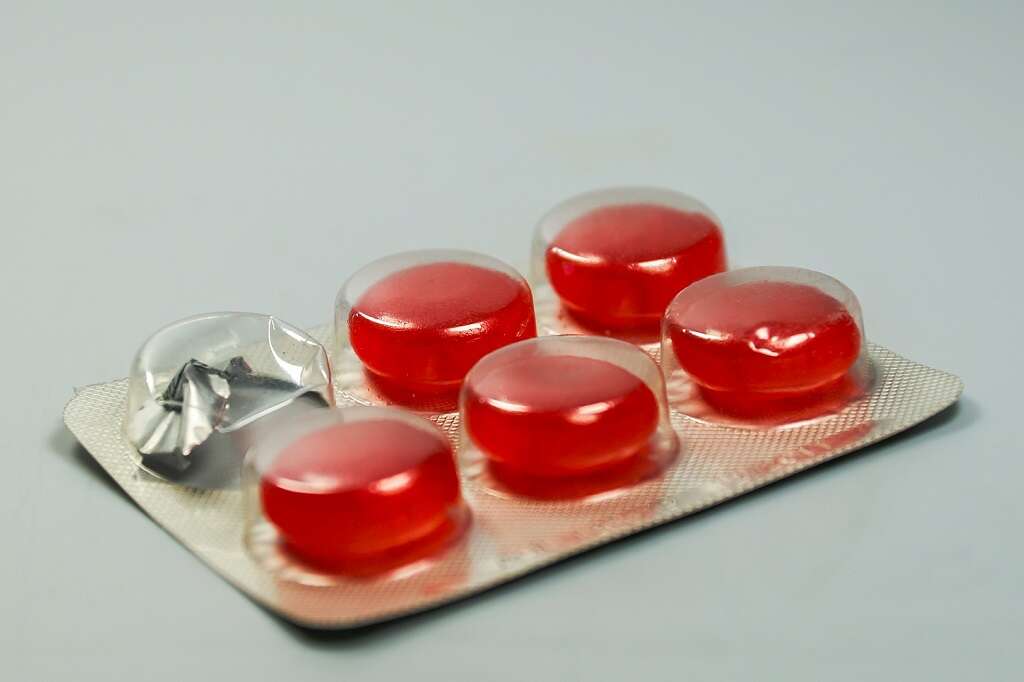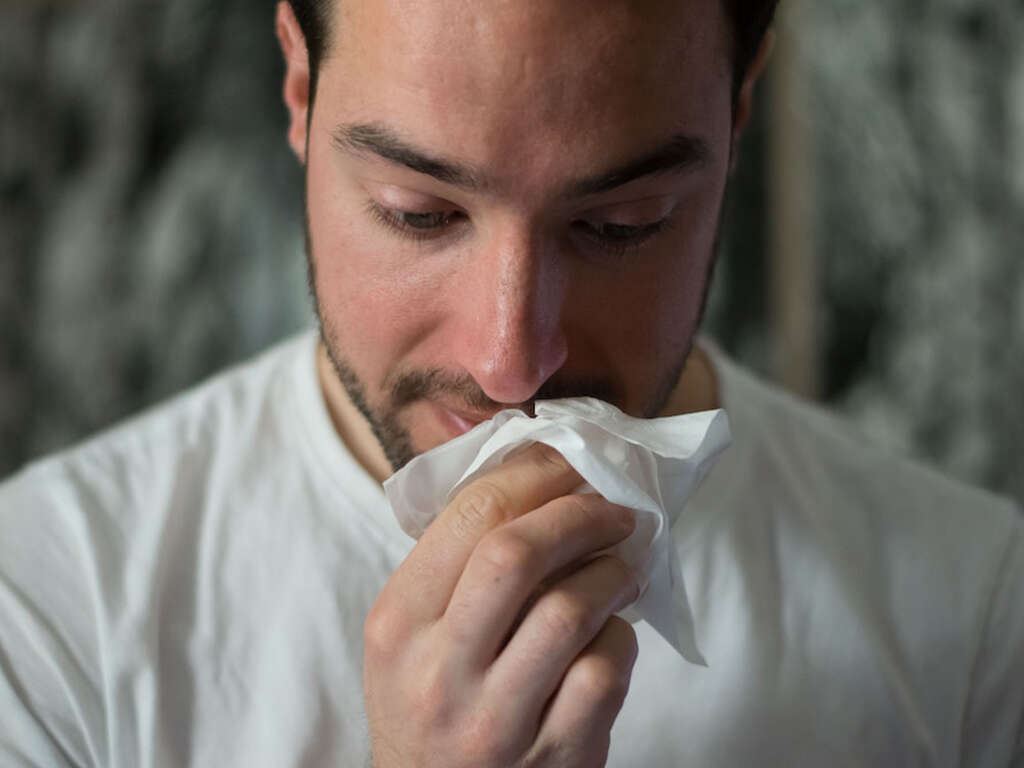Oral Candidiasis Meaning, Causes and More
 Article Sources
Article Sources
- 1. 'Oral Thrush.' Mayo Clinic, Mayo Foundation for Medical Education and Research, 8 Mar. 2018, www.mayoclinic.org/diseases-conditions/oral-thrush/symptoms-causes/syc-20353533
- 2. 'Thrush: Causes, Symptoms, Diagnosis, Treatments & Prevention.' Cleveland Clinic, my.clevelandclinic.org/health/diseases/10956-thrush
- 3. 'Oral Thrush (for Parents) - Nemours KidsHealth.' Edited by Michelle P. Tellado, KidsHealth, The Nemours Foundation, Sept. 2019, kidshealth.org/en/parents/thrush.html
- 4. 'Candida Infections of the Mouth, Throat, and Esophagus.' Centers for Disease Control and Prevention, Centers for Disease Control and Prevention, 25 Feb. 2021, www.cdc.gov/fungal/diseases/candidiasis/thrush/index.html
- 5. Thompson, George R, et al. 'Oropharyngeal Candidiasis in the Era of Antiretroviral Therapy.' Oral Surgery, Oral Medicine, Oral Pathology, Oral Radiology, and Endodontics, U.S. National Library of Medicine, Apr. 2010, www.ncbi.nlm.nih.gov/pmc/articles/PMC2843789/
- 6. 'Candidiasis.' Centers for Disease Control and Prevention, Centers for Disease Control and Prevention, 30 Oct. 2020, www.cdc.gov/fungal/diseases/candidiasis/index.html
The fungus called Candida albicans is normally present in the mouths of healthy people. If an overgrowth of this organism occurs, a person develops an infection called oral candidiasis or thrush.
Oral candidiasis can affect anyone, but it's often seen in infants and the elderly. In healthy individuals, this infection is usually a minor issue and easy to control. Those with weakened immune systems, however, may experience more serious symptoms and may find the infection more difficult to treat. If the underlying cause isn't rectified, oral candidiasis may recur. In some cases, the infection can pass from one person to another.1‘Oral Thrush.’ Mayo Clinic, Mayo Foundation for Medical Education and Research, 8 Mar. 2018, www.mayoclinic.org/diseases-conditions/oral-thrush/symptoms-causes/syc-20353533
Symptoms of Oral Candidiasis in Kids and Adults
Oral candidiasis may cause slightly raised white lesions to appear on the tongue and inner cheeks. They sometimes spread to the gums and roof of the mouth and, occasionally, to the tonsils and throat. The lesions may bleed a bit if disturbed. The corners of the mouth may redden and split. The person may notice a cottony feel in the mouth with burning or pain that makes eating or swallowing difficult, and they may lose their sense of taste.
People who wear dentures may develop painful irritation beneath the dentures. If the infection spreads into the esophagus, the individual may have swallowing issues.1‘Oral Thrush.’ Mayo Clinic, Mayo Foundation for Medical Education and Research, 8 Mar. 2018, www.mayoclinic.org/diseases-conditions/oral-thrush/symptoms-causes/syc-20353533
Symptoms of Oral Candidiasis in Babies and Nursing Mothers
In addition to the other thrush symptoms, babies may be irritable and have trouble feeding. They may pass the infection to their mothers while breastfeeding, possibly causing unpleasant symptoms in the mother's breasts.
If a nursing mother develops Candida infections in her breasts, her nipples may be cracked, red, itchy and sensitive, and she may notice flaky or shiny skin on the areolas. The breasts may develop deep, stabbing pain, and nursing may cause discomfort.1‘Oral Thrush.’ Mayo Clinic, Mayo Foundation for Medical Education and Research, 8 Mar. 2018, www.mayoclinic.org/diseases-conditions/oral-thrush/symptoms-causes/syc-20353533

Causes of Oral Candidiasis
Small quantities of Candida fungus are usually present in the mouths and digestive tracts of most healthy people. Beneficial bacteria and other microorganisms typically keep the fungus from spreading out of control. But when the balance between the beneficial bacteria and the fungus is disturbed, Candida fungus may proliferate and cause oral candidiasis.
The presence of certain medical conditions or using various medications may also create the imbalance between fungus and beneficial bacteria that allows oral candidiasis to develop.2‘Thrush: Causes, Symptoms, Diagnosis, Treatments & Prevention.’ Cleveland Clinic, my.clevelandclinic.org/health/diseases/10956-thrush
Risk Factors for Developing Oral Candidiasis
People with weakened immune systems are at greater risk of developing oral candidiasis. This includes infants, the elderly, people with HIV/AIDS and people undergoing medical therapies for cancer. People with uncontrolled diabetes have high amounts of sugar in their saliva that promote the growth of Candida.
Those who smoke, wear dentures or have dry mouth are more likely to experience oral candidiasis. Taking medications, such as antibiotics, prednisone or inhaled corticosteroids, may create internal conditions that encourage oral candidiasis to develop.1‘Oral Thrush.’ Mayo Clinic, Mayo Foundation for Medical Education and Research, 8 Mar. 2018, www.mayoclinic.org/diseases-conditions/oral-thrush/symptoms-causes/syc-20353533,2‘Thrush: Causes, Symptoms, Diagnosis, Treatments & Prevention.’ Cleveland Clinic, my.clevelandclinic.org/health/diseases/10956-thrush

Diagnosing Oral Candidiasis
Health care providers can usually diagnose oral candidiasis by conducting a visual examination. They may view tissue from one of the lesions under a microscope to confirm the diagnosis. If the provider thinks an underlying condition may be causing oral candidiasis, they may conduct blood tests.
If the infection spreads to the esophagus, additional diagnostic measures may be necessary. These may include a throat culture, X-rays of the esophagus or an endoscopy.1‘Oral Thrush.’ Mayo Clinic, Mayo Foundation for Medical Education and Research, 8 Mar. 2018, www.mayoclinic.org/diseases-conditions/oral-thrush/symptoms-causes/syc-20353533,2‘Thrush: Causes, Symptoms, Diagnosis, Treatments & Prevention.’ Cleveland Clinic, my.clevelandclinic.org/health/diseases/10956-thrush
Treating Oral Candidiasis
The treatment of choice may vary based on the person's age and health as well as the cause and severity of the condition. For healthy kids and adults, doctors usually prescribe an antifungal medication, available as tablets, lozenges or liquids the person swishes around in the mouth before swallowing.1‘Oral Thrush.’ Mayo Clinic, Mayo Foundation for Medical Education and Research, 8 Mar. 2018, www.mayoclinic.org/diseases-conditions/oral-thrush/symptoms-causes/syc-20353533
For infants with oral candidiasis, doctors prescribe an antifungal medication that's applied inside the baby's mouth using a sponge applicator. Antifungal ointments are prescribed to nursing mothers with yeast infections on their nipples.3‘Oral Thrush (for Parents) - Nemours KidsHealth.’ Edited by Michelle P. Tellado, KidsHealth, The Nemours Foundation, Sept. 2019, kidshealth.org/en/parents/thrush.html

When To See a Doctor
While oral candidiasis may resolve without treatment in certain cases, it's best to obtain medical care if white lesions appear in the mouth. The physician can make the proper diagnosis and prescribe management methods to eradicate the infection and ease any discomfort.
Oral candidiasis is sometimes a sign of an underlying condition. If that's the case, a health care provider can diagnose and manage that condition to help prevent the recurrence of oral candidiasis.1‘Oral Thrush.’ Mayo Clinic, Mayo Foundation for Medical Education and Research, 8 Mar. 2018, www.mayoclinic.org/diseases-conditions/oral-thrush/symptoms-causes/syc-20353533
Complications of Oral Candidiasis
Oral candidiasis isn't usually a serious problem for healthy kids and adults, and they get over it if they follow the prescribed treatment regimen.
In people with compromised immune systems, especially in those living with HIV or AIDS, oral candidiasis may spread to the throat, esophagus or other parts of the body. Respiratory distress and dysphasia may develop. Doctors may treat esophageal candidiasis with oral or intravenous administration of the antifungal fluconazole.1‘Oral Thrush.’ Mayo Clinic, Mayo Foundation for Medical Education and Research, 8 Mar. 2018, www.mayoclinic.org/diseases-conditions/oral-thrush/symptoms-causes/syc-20353533,4‘Candida Infections of the Mouth, Throat, and Esophagus.’ Centers for Disease Control and Prevention, Centers for Disease Control and Prevention, 25 Feb. 2021, www.cdc.gov/fungal/diseases/candidiasis/thrush/index.html,5Thompson, George R, et al. ‘Oropharyngeal Candidiasis in the Era of Antiretroviral Therapy.’ Oral Surgery, Oral Medicine, Oral Pathology, Oral Radiology, and Endodontics, U.S. National Library of Medicine, Apr. 2010, www.ncbi.nlm.nih.gov/pmc/articles/PMC2843789/

Preventing Oral Candidiasis
Practicing good oral hygiene may go a long way toward preventing oral candidiasis. This includes regular brushing and flossing, getting periodic dental checkups and cleanings and addressing dry mouth issues. Dentures should fit correctly without causing irritation and should be removed and cleaned each night.
Limiting sugar consumption may help prevent the overgrowth of Candida. People with diabetes should closely monitor their blood sugar to maintain low levels of sugar in their saliva.1‘Oral Thrush.’ Mayo Clinic, Mayo Foundation for Medical Education and Research, 8 Mar. 2018, www.mayoclinic.org/diseases-conditions/oral-thrush/symptoms-causes/syc-20353533
Where Else in the Body Can Candidiasis Occur?
In addition to causing problems in the mouth, throat and esophagus, overgrowth of Candida may occur in the vagina, where it's called a yeast infection. Symptoms include abnormal vaginal discharge, itching and soreness in the vagina, and pain during urination or intercourse. Management of vaginal yeast infections involves using topical or oral antifungals.
Some people may develop a dangerous, invasive Candida infection that may affect the heart, brain, blood, eyes, bones and other body parts. This type of infection may require intravenous antifungal administration.6‘Candidiasis.’ Centers for Disease Control and Prevention, Centers for Disease Control and Prevention, 30 Oct. 2020, www.cdc.gov/fungal/diseases/candidiasis/index.html









